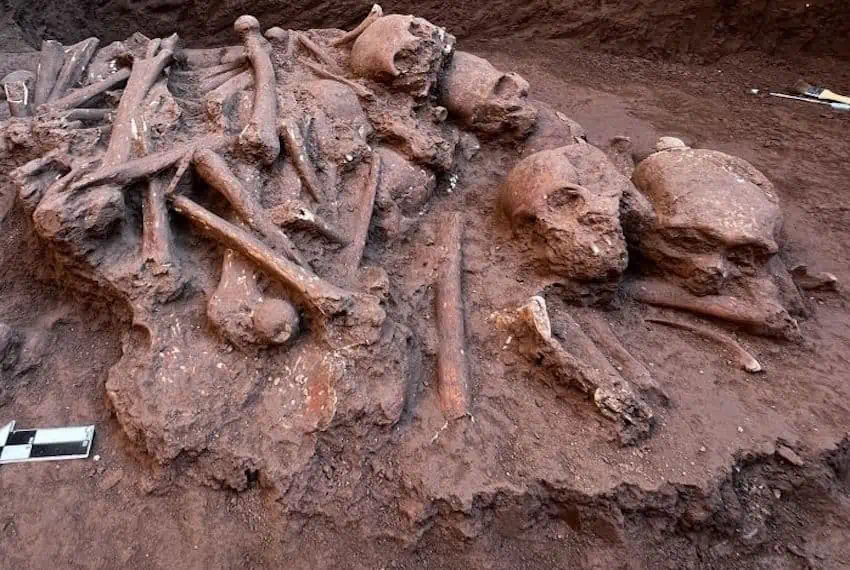‘Exceptional’ pre-Columbian funerary complex discovered in Nayarit

An “exceptional” funerary system has been discovered during the construction of a sewage system in the small Nayarit community of Pozo de Ibarra, the National Institute of Anthropology and History (INAH) announced Monday.
As described by the archaeologist leading the recovery work, Claudia Servín Rosas, the finding comprises a primary burial where the skeleton remains intact and a deposit of purposefully arranged human bones.
“Long bones such as femurs, tibias, rays and ulnae were carefully arranged in a specific area,” the INAH statement said. “Similarly, the skulls were intentionally grouped, some even stacked on top of each other, in another sector of the ossuary.”
Upon conducting controlled explorations, archaeologists discovered that the way the bone remains were arranged indicated a complex funerary system: all of the bones were placed during a single event after undergoing skeletonization.
INAH said that the discovery may be related to the Amapa cultural phase (500-800/850 A.D.), which saw Nayarit’s northwestern lowlands become densely populated, as ceramic vessels and anthropomorphic figurines from that period were also found.
“This method of arrangement suggests the existence of specific death-related ceremonial practices in pre-Columbian times in the region,” INAH explained.
INAH’s field analysis revealed at least seven complete skulls, some of which show evidence of cranial modification, a common cultural practice among Mesoamerican societies for aesthetic purposes and social distinction.
INAH explained that this funerary system may have been part of funerary rites performed in the region, which is likely related to the founding of settlements. “This burial style is unparalleled in nearby sites, making this archaeological discovery exceptional, as it enriches the understanding of funerary practices in the region,” the INAH said.
Mexico News Daily
Source: Mexico News Daily

